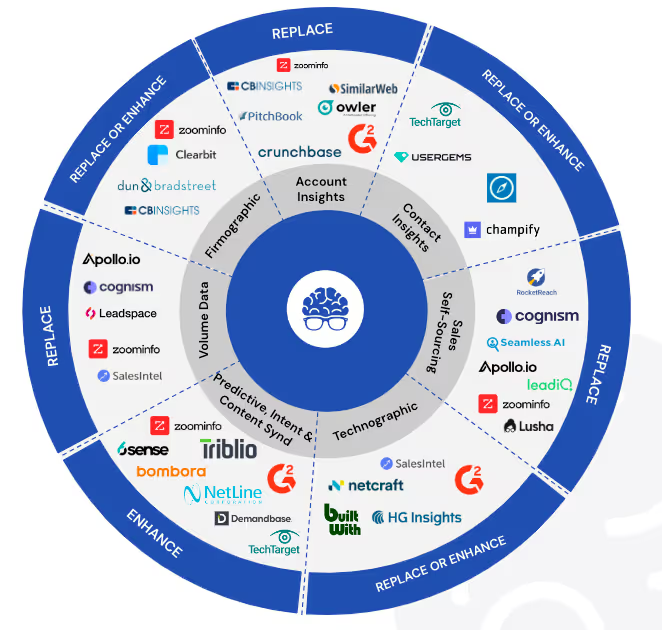If you think contract management responsibilities end once the client signs on the dotted line, think again. You need to know how to track contracts effectively in the long term to be able to get the most out of lead lifecycles.
What is Contract Tracking?
Contract tracking means monitoring the stages and progression of contracts in business. The aim is to ensure that contractual mechanisms function as expected, and that all involved parties meet their responsibilities. By tracking a contract, you’re basically checking where it is in its lifecycle.
You could make the greatest contract proposal ever on the best proposal software in the world, and it still won’t help you unless you know how to track contracts. In general, the progression of a contract looks like this:
- Initial prep: The involved parties establish their various aims and objectives. It’s also when you should be learning as much as you can about the other parties.
- The drafting process: The initial draft serves as a starting point for revision between parties.
- Negotiations: The contract is refined over time to a point of mutually agreed compromise.
- Signing: All relevant parties approve the final contract, sign it, and commit to its requirements.
- Execution of responsibilities: All involved parties begin performing their contractual obligations, such as one party paying each month to gain access to a service run by the other party, and properly managing the invoice and receipt process.
- Compliance audits: Reviews to ascertain whether parties have met contractual obligations in line with documented key dates.
- Renewal or cancellation: As a contract approaches its end, the involved parties must either renew the contract, renegotiate it, or scrap it altogether.
Essential Contract Information to Track
With so much potential detail in even a simple contract, you need to be able to cut through the jargon and focus on the important elements. Here’s a basic list of the most essential things you should focus on concerning how to track contacts effectively.
Contract end or renewal dates

Let’s start with the obvious. When tracking any contract, the first thing you should bear in mind is how long it has left to run. Whether you end a contract or renew it for another cycle, you want plenty of advanced notice to make that decision.
You also need that time to organize any resources involved in a potential contract renewal, like money for payments or goods for sale. Failure to maintain awareness of when your contract renews can cause major issues, such as conflicting commitments or payment problems.
Termination notices
Termination notice requirements are widely used in a lot of contracts. A common example is the typical two-week notice when quitting a job. Termination notices help prevent any contract cancellation from being totally unexpected.
They allow businesses and individuals to get their affairs in order before the contract’s status quo gets disrupted. For instance, an organization typically uses a quitting employee’s notice period to fill the position before it becomes vacant.
Termination notices also serve as an important reminder not to renew accidentally. Erroneous renewals result in unwarranted charges. This is a fast way to alienate customers, whether they’re individuals or B2B clients.
Compliance requirements
You need to know how to track contracts because it’s the best way to evidence that you’ve done your due diligence. Contract management is subject to regulations like data privacy and compliance procedures. Of course, your specific commitments will vary depending on where and how your business operates.
The fact is, not all non-compliance is malicious. In fact, a lot of it is accidental. This matters little in the eyes of the law. But it’s why double and triple-check your contractual compliance requirements regularly throughout proceedings.
Obligations and rights
Beyond general regulatory compliance, you need to observe any obligations and rights set down in the contract itself. For example, a major goods client may have the right to withdraw if fufilment costs rise above a certain agreed figure.
As such, you need to monitor your contractual obligations and any related requests made. If you really want to optimize the lead lifecycle, then maximize customer satisfaction with fast turnaround times.
Key dates and milestones

While a contract’s renewal date is probably the most important to bear in mind, it’s not the only one. Depending on the nature of your contract, there might be:
- Deadlines for key deliverables.
- Established dates for specific procedures like inspections, reviews, etc.
- Warranty expiration dates.
Then there are milestones – interim goals which help to make sure the contract is progressing at an effective rate. Let’s say you’re a manufacturer with a three year contract to produce computer processors.
Your first big milestone might be to produce 10,000 units of secure phones for a hubs of logistics depots. In order to hit that milestone in a timely manner, you might set a provisional deadline of six months. Succeed, and you move onto the next milestone.
Fail, and be forced to reevaluate. If you see the business is in danger of failing to hit a contractual milestone in time, you need to be ready with a risk mitigation plan.
Agreed deliverables
Deliverables are contractually obligated requirements worked out between parties. They’re usually the end products or services offered by a business. To meet contractual obligations, you have to make sure deliverables from each party are made available seamlessly or by the agreed upon timeframe.
Let’s use the example of a B2B comms company.
In a contract with a client, the comms company agrees to provide VoIP for business as a service. They also agree to maintain the service and prevent undue disruption. In return, the client agrees to deliver payment at the agreed upon intervals.
To stay on top of this, you need to regularly review any information pertaining to the deliverables for which your organization is responsible. This includes diagnostic reports, customer feedback, and any other data you can get your hands on.
How to Track Contracts for Improving Lead Lifecycles
Knowing how to track contacts effectively is about much more than compliance. If done well, it can work wonders for sustaining lead lifecycles by boosting customer loyalty. Here are some tips to ensure you’ve covered all your bases.

Identify important lead information details
Let’s say you’ve identified a potential lead for your business. Before you start drafting Salesforce proposals, before you even think about the contract in any way, you need to learn as much as you can. This can include:
- Client needs.
- Pain points.
- The market segment(s) they belong to.
- B2B client industry (if applicable).
- Pre-existing contractual commitments (if applicable).
Choose a tracking tool based on well-defined needs
Choosing the right tracking tool for your business is an essential part of tracking contracts properly. In other words, you need to choose a Customer Lifecycle Management (CLM) platform. That said, a lot of organizations still rely on spreadsheets to track contract stages and progression.
While this may work at first, the problem is that it’s entirely manual. As your business grows, it’ll get harder to track all the various moving parts in contracts handled by your organization. The resulting mistakes cause delays, or worse cause a breach of contract.
The right CLM can significantly reduce human error by automating various functions and alerting to contract progression and milestones. Beyond that, tracking tool suitability is determined by:
- The nature of your industry.
- Your different types of stakeholders.
- The kinds of data you collect.
Train your team for new systems and technologies
One of the main reasons to embrace modern CLM architecture is to store contracts and tracking reports centrally. In the same way that consolidating tech stacks increases RoI for sales and marketing, consolidating contract storage enables better tracking and more reactive management.

Of course, in your rush to embrace technology, make sure your team members aren’t left behind. While some may be reluctant to change systems, modern tracking tools and centralized storage prevent data loss as well as human error. If properly implemented, they should also be more user-friendly than older methods.
Regularly update contract status and information
To make things as easy as possible for all parties involved, it’s worth updating the contract as it moves through stages and milestones and making sure it’s communicated to all stakeholders on secure phone devices.
Send out an SMS broadcast or a mass email if you have to – keeping everyone up to speed is vital for smooth communications in the long term.
Firstly, like the above advice, it helps to eliminate human error. Let’s say you’re tracking a contract to provide 100,000 batches of medicine. You update the contract status to show 50,000 units delivered. Then, the recipient party reports only receiving 45,000, triggering a recount and risk mitigation.
Secondly, it shows your due diligence as a service provider. Regular updates show you’ve been working to meet your contract commitments and compliance requirements.
Find possible constraints and contract gaps
Again, human error raises its head. One of the reasons contract work is so complex is that you have to consider every eventuality. What’s the significance of this clause in that circumstance, and so on.
You may find a contract doesn’t cover your business as much as first thought, or that it doesn’t account for an important part of your agreement. This can cause delays and frustration at best, or massive legal complications at worst.
To spot potential issues ahead of time, consider using AI for contract data collection and analysis. Properly trained algorithms can spot contract errors more quickly and effectively than humans.
In-depth Contract Tracking Enables Timely Responses
Knowing how to track contracts effectively makes for more effective lead management. It increases progress visibility and prevents issues and developments from slipping between the cracks.
By automating busywork and creating progress alerts, you can cut turnaround time or roll it right back into brainstorming. This makes it easier to resolve contractual issues quickly and painlessly, making for much better client relationships.




